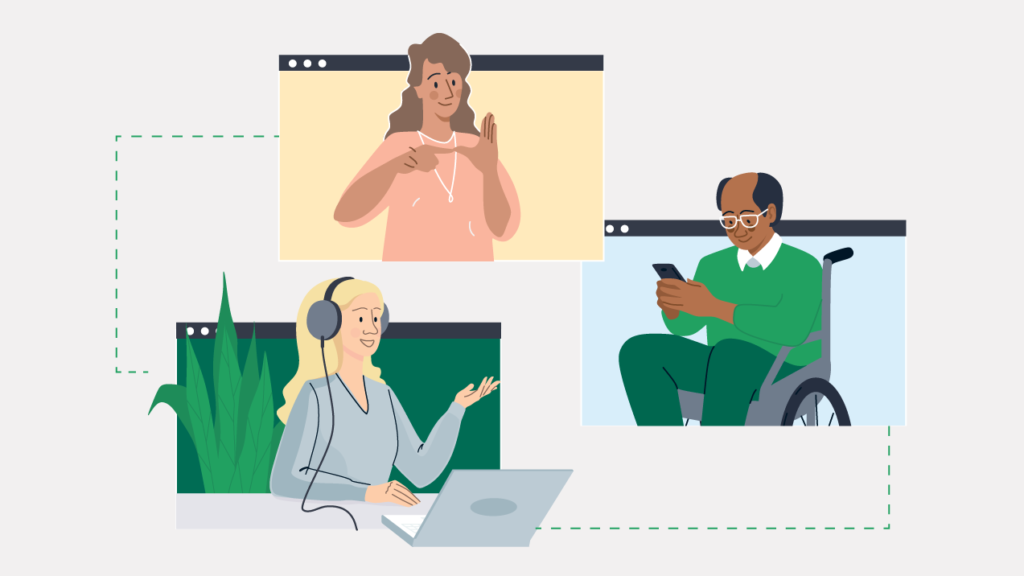
Engaged patients should be empowered partners in managing their health. But it’s hard to empower them if you can’t make a personal connection.
There are plenty of ways technology can be a massive helper in creating those partnerships. It can encourage patients to take action and make it more accessible for them. It can also free up more of your time to spend with them, streamlining the entire patient experience.
Here are some of the ways your practice and patients could benefit from investing in helpful technology.
Streamline the small stuff to focus on your patients
The less time you’re spending on basic administrative tasks, the more time you can put back into your patient relationships. And it helps to have a digital trail when you’re following up with patients.
Online bookings mean that patients have a more convenient way to interact with you that isn’t limited by your opening hours. Of course, they can still choose to speak with you directly if they prefer it. Offering alternatives just means that they have a choice, and it reduces the traffic on your phone lines for those that want to call in.
Automation that doesn’t miss a beat
Using automated reminder messages takes the burden off your staff, and makes sure that messaging is consistent and timely. Patients likely can’t even tell that the messages are automated — they just appreciate the convenience and reassurance.
Automation also reduces the risks of human error. Of course your team are all superstars, but there are only so many hours in a day. You don’t need to remember recalls or worry about running out of time if the messages send themselves. Patients will still be prompted to make their next appointment. Using digital patient forms means you don’t need to worry about messy or rushed handwriting. It means patients can take their time and be more thoughtful about the information they provide.
Making appointments more accessible
Telehealth can make appointments more available to patients who might usually struggle to make it into the practice. Even if it’s just to help the patient decide whether they need to come in for an in-person check up, that accessibility helps. Tech can make it so much easier for patients to keep up their end of the partnership.
The pandemic and lockdowns have boosted the popularity of telehealth, encouraging Australian patients and practitioners to take up more flexible options. And the majority of patients who have used telehealth say they would gladly use it again.
The choice between video or voice calls can also improve your patients’ access, particularly if you have the ability to switch between them. A patient might have thought a phone call was more convenient, but you can quickly switch to video to check any physical symptoms.
Giving patients more flexibility takes away some of the barriers that might have held them back before. And it makes sure they have every opportunity to participate in active care.
Reporting can make your planning more effective
Making sure you have the right technology for reporting and metrics is important. It will help your team better plan for busy periods, and track patient behaviours and preferences.
Take a look at the times when you get the most phone calls, when practitioners are most likely to go over their appointment time, or when the waiting room gets busiest. That knowledge is key for planning your rosters and informing any changes to the way your practice operates. It means you can plan for extra staff to be available for patients during the busiest periods or find ways to streamline. That means patients aren’t left frustrated or unattended.
This kind of reporting can track the way patients interact with the technology your practice uses, so you can make sure it suits them and works. For example, you can test different SMS reminder types to see which gets the best response, or you could look at the most effective ways to send reminders about seasonal tests or treatments, like the flu vaccine.
More options to help patients understand
It’s not just their experience with your practice that’s more accessible with technology. Part of engagement is empowering patients to be proactive about their care in between appointments. Providing more resources can be a great way to engage patients and help them manage their health, whether it’s a book, app, or healthy habit they can take up.
Technology can also provide alternative forms of media, giving patients different ways to take in information. Sometimes a video, link to a helpful website, or visual display might help get the message across. It gives them better chances of understanding and remembering what you’ve told them. That means they have a better chance of successful health outcomes.
Digital doesn’t mean detached
So many of these extra tech touches are there to help with mundane tasks so you can make more space for those partnerships with your patients to thrive. That means rather than putting distance between you and your patients, they can actually open things up for a more productive and personal connection.
Patients won’t mind whether their recall message was manual or automated. But they will appreciate that your team has more time for them — that’s what matters most. It might feel like having a screen between you makes telehealth less personal, but it could save them postponing. Or worse, skipping the appointment because of conflicting schedules or tricky travel.
The patient experience is the sum of every interaction, big or small, that a patient has with your practice. And the more seamless that experience is, the better your relationship with these patients can be.
The sooner we look past those impersonal assumptions about tech, the sooner you and your patients can both start reaping the benefits.



